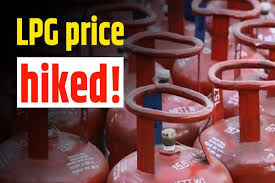On March 1, 2025, oil marketing companies in India announced an increase in the prices of 19 kg commercial LPG cylinders by ₹5.5 to ₹6 per cylinder. In Delhi, the price has risen from ₹1,797 to ₹1,803. This hike affects businesses relying on these cylinders, including small and large enterprises. However, the prices of 14.2 kg domestic LPG cylinders remain unchanged, providing relief to households.
Commercial LPG Cylinder Price Hike Effective March 1, 2025
Effective March 1, 2025, oil marketing companies have increased the prices of 19 kg commercial LPG cylinders by ₹6.
This adjustment impacts various cities across India as follows:
- Delhi: ₹1,803 (up from ₹1,797)
- Mumbai: ₹1,755.50 (up from ₹1,749.50)
- Kolkata: ₹1,913 (up from ₹1,907)
- Chennai: ₹1,965.50 (up from ₹1,959.50)
These revised rates are effective immediately and are expected to affect businesses that rely on commercial LPG cylinders. Notably, the prices of 14.2 kg domestic LPG cylinders remain unchanged, providing relief to household consumers.
Impact on Businesses
The increase in commercial LPG cylinder prices is anticipated to affect various sectors, particularly those heavily reliant on LPG for their operations:
- Hospitality Industry: Restaurants, hotels, and catering services that use LPG for cooking may experience increased operational costs.
- Manufacturing Sector: Industries utilizing LPG in their production processes could see a rise in manufacturing expenses, potentially impacting product pricing.
- Retail Food Outlets: Small eateries and street food vendors might face higher costs, which could influence their pricing strategies and profit margins.
Strategies for Mitigation
Businesses may consider the following approaches to manage the impact of rising LPG prices:
- Energy Efficiency: Investing in energy-efficient appliances can reduce LPG consumption and offset increased fuel costs.
- Alternative Energy Sources: Exploring other energy options, such as electricity or induction cooking, could provide cost-effective alternatives to LPG.
- Cost Management: Implementing stringent cost-control measures and optimizing operations can help absorb additional expenses without significantly affecting profitability.
Conclusion
The recent hike in commercial LPG cylinder prices underscores the need for businesses to adapt and innovate in response to fluctuating fuel costs. By adopting energy-efficient practices and exploring alternative energy sources, businesses can mitigate the impact of such price increases. Meanwhile, the stability in domestic LPG cylinder prices offers some respite to households amid these changes.






